
Happy Halloween! It is the time of year for Jack O' Lanterns, trick or treating, spooky decorations and funny costumes. This season is rich in diverse traditions including those of All Saints Day, Dia de los Muertos, and of course, Halloween.
But...
Posted on
Thursday, October 24, 2024 at
2:20 PM
Focus Area Tags: Agriculture, Environment, Family, Food, Health, Yard & Garden
Forecasts are for a mild La Nina which usually means low rainfall, cooler temperatures and relative humidities, all of which usually means greater conditions for freeze events. Watch some of these training videos from UC Davis Land Air Water Resources Department to prepare for those events:
https://lawr.ucdavis.edu/cooperative-extension/frost-protection
In the United States, the economic losses due to frost damage exceed all other weather-related phenomena. Although the economic, environmental, and social impacts of frost damage are significant on a local and global scale, the information available to the public, particularly growers, on how to avoid plant damage is insufficient. As a result, the University of California Cooperative Extension created the following narrated training units to provide growers with the scientific principles behind frosts and to demonstrate various methods to prepare for frosts and avoid plant damage. The training unit titled “Passive Frost Protection” discusses the basic definition and types of frosts, how frosts relate to atmospheric conditions, and the preventative measures that are carried out prior to a frost event to avoid or minimize damage. The training units “Active Frost Protection: Water” and “Active Frost Protection: Wind Machines” discuss the energy and labor intensive processes carried out during a frost event. The final training unit, “Methods of Measuring Temperature”, provides instructions for measuring various types of temperatures critical to frost monitoring and describes several of the frost alarm systems available to growers.ystems available to growers.
Additional features
- English and Spanish Versions
- Incorporate examples from certain types of crops with a primary focus on vineyards
Training Units :
The presentations below will run automatically on your computer, and include recorded audio.
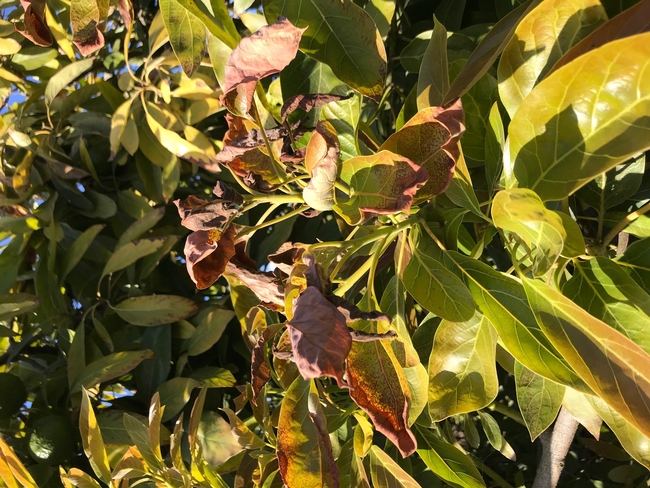
frost damage leaves
Posted on
Wednesday, October 23, 2024 at
8:07 AM
Focus Area Tags: Agriculture
Come hear about cover crops and how we measure their effects on soil and improved growing conditions
Climate-Smart Farming Demonstration Field Meeting
November 6, 2024 9:00 AM - 11:45 AM
5352 Beardsley Rd.
Camrillo, CA 93010
Contact: Siomara Zendejas siozendejas@ucanr.edu
Sponsor: California Farm Demonstation Network
Details:
Climate-Smart Farming
Demonstration Meeting
Part 1 (9-10:30am): UC Hansen REC
5352 Beardsley Rd. Camarillo, CA
Part 2 (10:40-11:45am): Rodale Institute COC, McGrath Farm
1012 West Ventura Blvd, Camarillo, CA
Click here to view the flyer
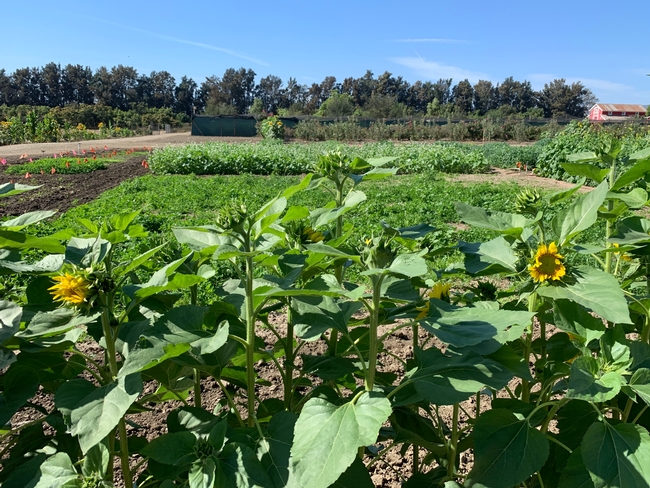
cover crop trail Hansen
Posted on
Monday, October 21, 2024 at
7:32 AM
Focus Area Tags: Agriculture
Ambrosia Beetle Research Project Seeks California Avocado Groves to Survey
Dr. Paul Rugman-Jones is collaborating with University of Florida researchers on a project called, "Sustaining avocado production in the face of the lethal laurel wilt disease". As part of this project, he is looking to survey California avocado groves located in Ventura, San Diego and Riverside/San Bernardino Counties.
Currently, laurel wilt in Florida is spread — particularly in avocado — by several ambrosia beetle species. While California does not yet have laurel wilt or the red bay ambrosia beetle, through his research Dr. Rugman-Jones hopes to pre-emptively gather knowledge that will help the California avocado industry prepare in case that were to change.
Dr. Rugman-Jones seeks to sample at least two commercial California avocado orchards in each of the above-noted counties three times in 2025 and 2026 — in the spring, summer and fall. On the first visit each season, a series of Lindgren funnel traps will be placed in the orchards and baited with known ambrosia beetle attractants. The traps will be not allow the insects to escape. The contents of the traps will be collected after two weeks, refilled and then recollected after two weeks. During the visits, he will walk the groves looking for evidence of ambrosia beetle infested branches. With the permission of the grower, he would remove and bag those branches for study at a quarantine facility.
In addition to avocado, he will conduct limited surveys of California Bay Laurel and Camphor tree, both of which are susceptible to laurel wilt, and may provide a network of inoculative sources for secondary translocation of the laurel wilt pathogen into avocado orchards.
Growers who are interested in participating in the study should contact Dr. Rugman-Jones at paulrj@ucr.edu.
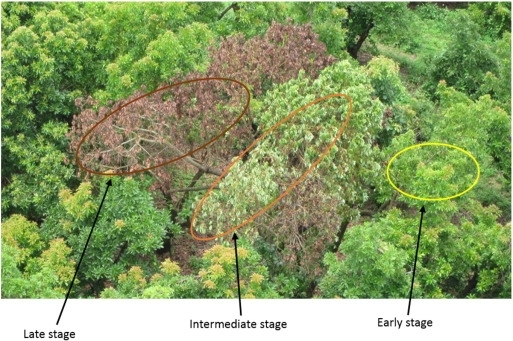
laurel wilt stages
Posted on
Friday, October 18, 2024 at
7:31 AM
Focus Area Tags: Agriculture
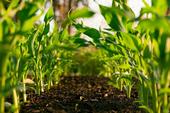
Tackling Food Waste for Climate Resilience
Reducing food waste is a critical strategy for addressing food insecurity, mitigating climate change, and enhancing economic productivity. Achieving the goals set by the United States Department of Agriculture...
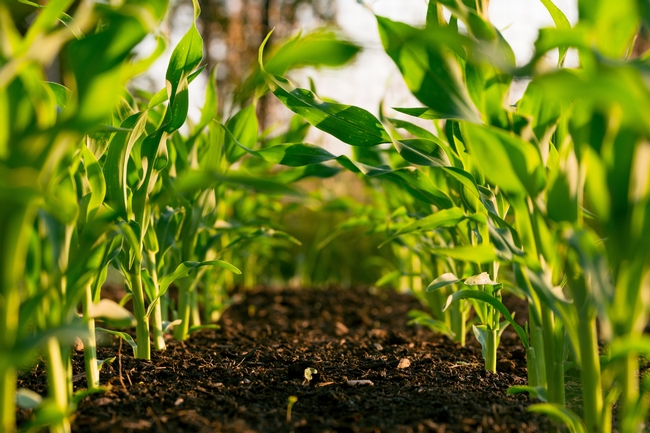
Resilient Food System
Photo: Steven Weeks. The photo depicts a field of corn at early stage with rich soil between the rows.
Posted on
Wednesday, October 16, 2024 at
1:37 PM








